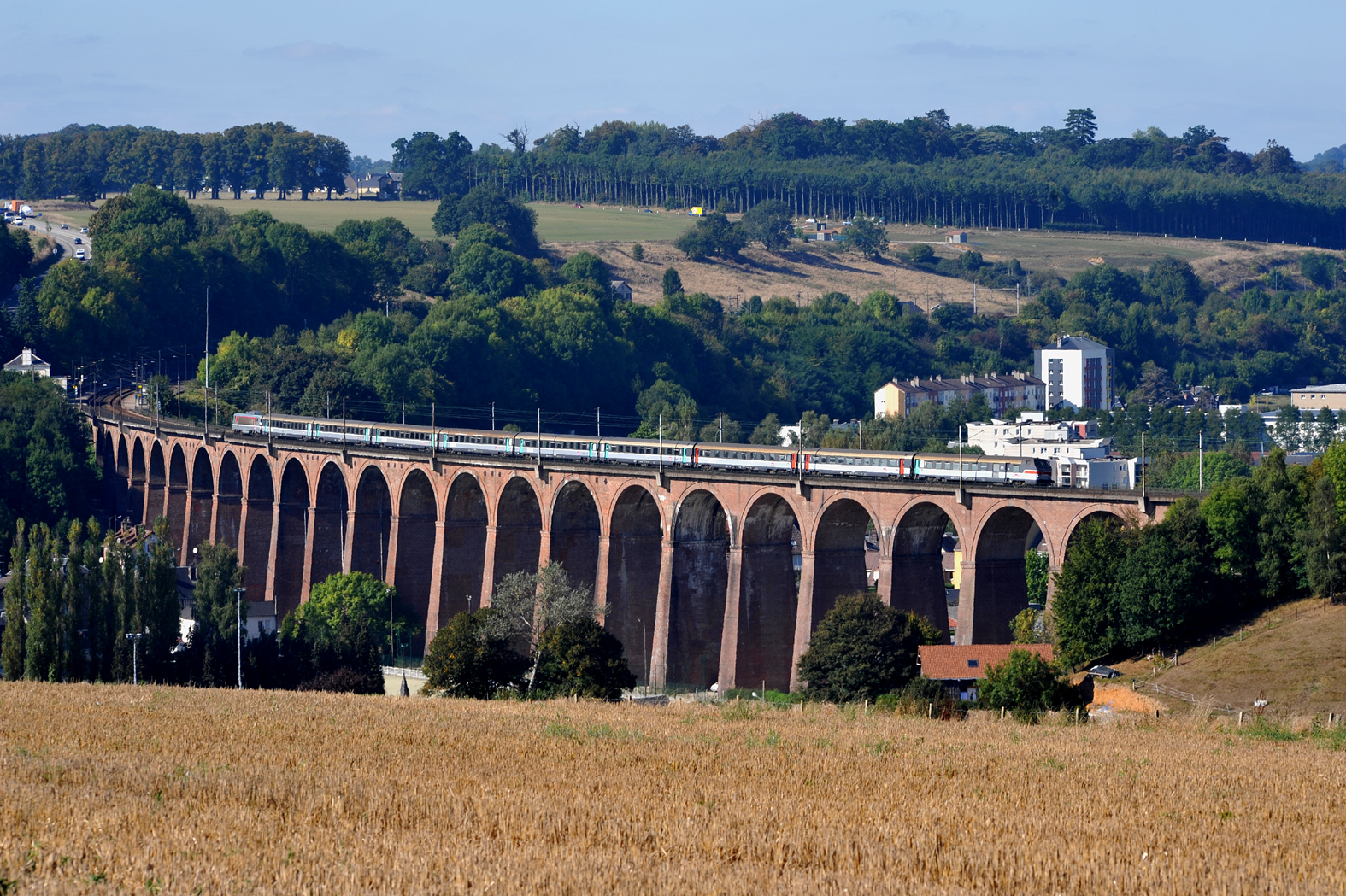Barentin Viaduct on:
[Wikipedia]
[Google]
[Amazon]

 Barentin Viaduct is a railway
Barentin Viaduct is a railway

 Barentin Viaduct is a railway
Barentin Viaduct is a railway viaduct
A viaduct is a specific type of bridge that consists of a series of arches, piers or columns supporting a long elevated railway or road. Typically a viaduct connects two points of roughly equal elevation, allowing direct overpass across a wide ...
that crosses the Austreberthe River on the Paris–Le Havre line near to the town of Barentin
Barentin () is a commune in the Seine-Maritime department in the Normandy region in northern France.
Geography
The town is situated in the valley of the Austreberthe, a small affluent of the Seine. It is a town of light industry and farming sit ...
, Normandy
Normandy (; or ) is a geographical and cultural region in northwestern Europe, roughly coextensive with the historical Duchy of Normandy.
Normandy comprises Normandy (administrative region), mainland Normandy (a part of France) and insular N ...
, France
France, officially the French Republic, is a country located primarily in Western Europe. Overseas France, Its overseas regions and territories include French Guiana in South America, Saint Pierre and Miquelon in the Atlantic Ocean#North Atlan ...
, about from Rouen
Rouen (, ; or ) is a city on the River Seine, in northwestern France. It is in the prefecture of Regions of France, region of Normandy (administrative region), Normandy and the Departments of France, department of Seine-Maritime. Formerly one ...
. It was constructed of brick with 27 arches, high with a total length of . The British engineer was Joseph Locke
Joseph Locke FRSA (9 August 1805 – 18 September 1860) was an English civil engineer of the nineteenth century, particularly associated with railway projects. Locke ranked alongside Robert Stephenson and Isambard Kingdom Brunel as one of the ...
and the contractors were William Mackenzie and Thomas Brassey
Thomas Brassey (7 November 18058 December 1870) was an English civil engineering contractor and manufacturer of building materials who was responsible for building much of the world's railways in the 19th century. By 1847, he had built about o ...
.
Shortly after it was completed, after several days of heavy rain, the viaduct
A viaduct is a specific type of bridge that consists of a series of arches, piers or columns supporting a long elevated railway or road. Typically a viaduct connects two points of roughly equal elevation, allowing direct overpass across a wide ...
collapsed on 10 January 1846. The cause of the collapse was never determined. One theory was that it had been filled with ballast before the mortar was dry. Another theory blamed the lime mortar
Lime mortar or torching is a masonry mortar (masonry), mortar composed of lime (material), lime and an construction aggregate, aggregate such as sand, mixed with water. It is one of the oldest known types of mortar, used in ancient Rome and anci ...
which had been obtained from local sources. Whatever the cause, Brassey rebuilt the viaduct at his own expense, this time using lime of his own choice. The viaduct reopened in 1847, and still stands and is in use today.
The building of the Viaduct is fictionalized in Julian Barnes
Julian Patrick Barnes (born 19 January 1946) is an English writer. He won the Man Booker Prize in 2011 with ''The Sense of an Ending'', having been shortlisted three times previously with ''Flaubert's Parrot'', ''England, England'', and ''Arthu ...
's short story "Junction," published in his 1996 volume '' Cross Channel''.
Notes
Viaducts in France Railway bridges in France Bridges completed in 1846 Bridges completed in 1847 1847 establishments in France {{France-bridge-struct-stub